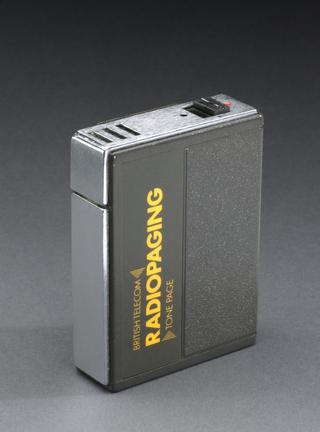
Wheatstone receiver (Morse inker), 1867
- Made:
- 1867 in United Kingdom








Wheatstone receiver (Morse inker), unknown maker, probably British, 1867.
The Morse inker was invented by an Austrian, Thomas John in 1854. A rotating ink wheel was lifted when a current was received, marking a strip of paper. The mechanism was driven by a falling weight. They were used widely across Europe, with the most popular inkers being made by the German firm Siemens and Halske, while in the United States, embossers remained more common. This inker was part of Charles Wheatstone's automatic telegraph system.
Details
- Category:
- Telecommunications
- Object Number:
- 1964-84
- Materials:
- wood (unidentified), brass (copper, zinc alloy), steel (metal), metal (unknown), paper (fibre product) and glass
- Measurements:
-
overall: 340 mm x 305 mm x 290 mm, 11.5 kg
- type:
- telegraph
- credit:
- Donated by the National Postal Museun




